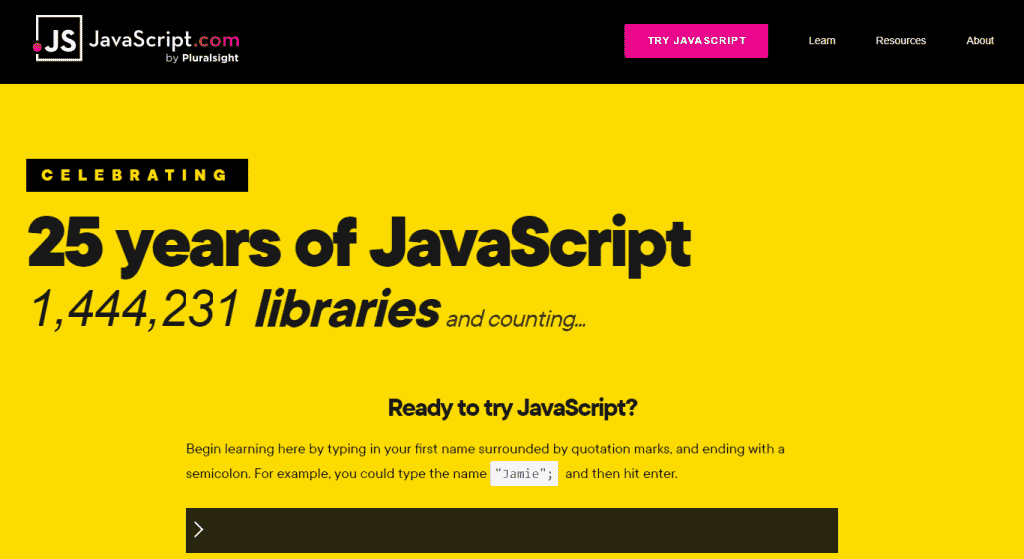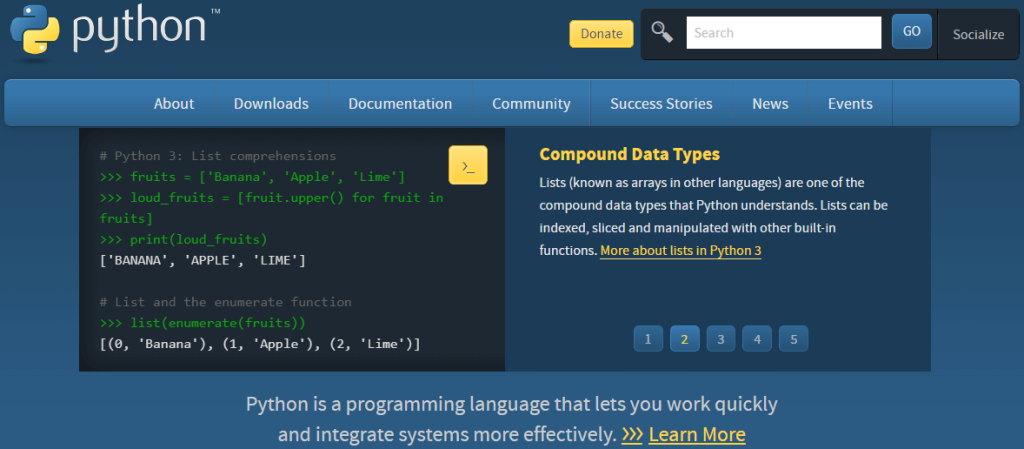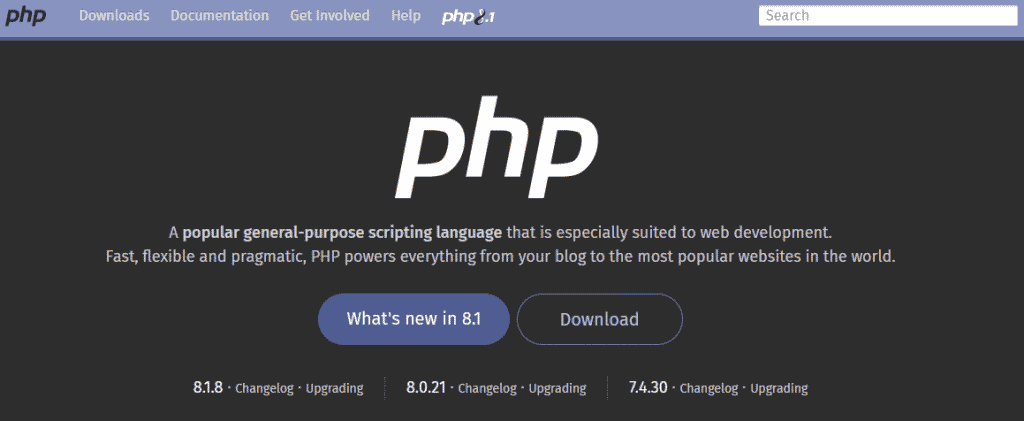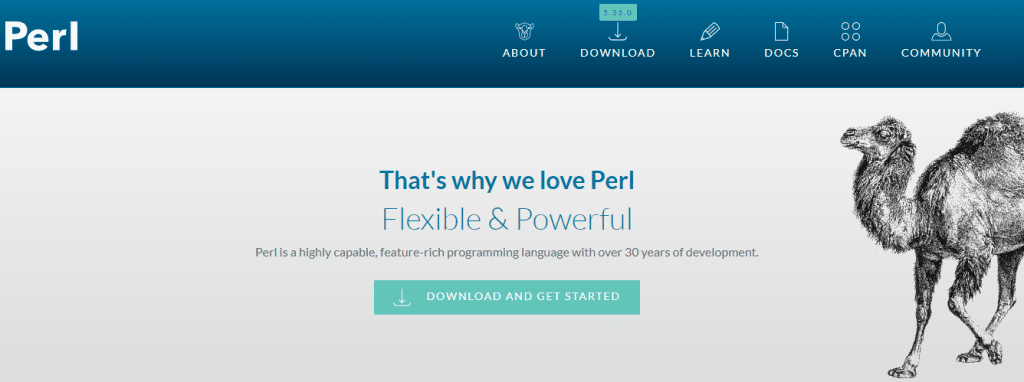When building an online application or simply adding some additional dynamics to a website, there is a special resource you need: scripting languages.
Learning about them and knowing which ones to use is essential to enjoy all that the modern web has to offer.
Scripting languages are types of programming languages where the instructions are written for a run-time environment, to bring new functions to applications, and integrate or communicate complex systems and other programming languages.
You have probably already heard of PHP, Python, JavaScript, and jQuery.
These are just a few examples of scripting languages that power the web and plenty of applications you and millions of other Internet users execute every day.
While all scripting languages are programming languages, not all programming languages are scripting languages.
This means that certain capabilities are exclusive to either of them, which requires the right amount of knowledge to use the appropriate ones.
Are you curious to learn more about these computer languages and their benefits? Here is everything you will see in this article:
Download this post by entering your email below
What is Scripting?
Scripting is a way of delivering instructions to a computer (or group of computers), as with all forms of programming.
The instructions in question not only tell a computer what to do but when and how to do it, as well.
A scripting language allows programs to be accessed and utilized by other programs, as is the case with many modern apps and computer functions.
However, users can also interact directly with scripted programs in many ways, including by inputting direct commands, clicking buttons, and so forth.
For example, when you open a new browser window to perform a Google search or navigate to a specific website, you interact directly with the program that powers the browser.
The browser program, in turn, may interact with any number of other programs at the same time to support your experience.
What’s the Difference Between Scripting and Coding?
Although coding and scripting are definitely related terms that people frequently confuse with one another, they’re not the same thing.
Coding refers to the use of any computer language to compose instructions for computers, the programs they run, or both. (The term “programming” and “coding” can be used interchangeably.)
Scripting, on the other hand, is a single type of coding.
To be more specific, scripting is a type of coding that automates various step-by-step functions or processes. Otherwise, these instructions would need to be input individually by a developer.
Other forms of coding (like CSS or HTML, to name just two examples) may tell a computer how to display a website.
In contrast, a scripting language like JavaScript or PHP makes that same website dynamic by instructing programs and computers to perform certain actions.
For example, let’s say you’d like to set your website up so that it automatically displays your five most recent blog posts on the homepage. Or perhaps you’d like to add a pop-up that prompts visitors to subscribe to your newsletter.
Your scripting language of choice is what makes options like these possible.
What are Scripting Languages?
A scripting language is a programming language that executes tasks within a special run-time environment by an interpreter instead of a compiler. They are usually short, fast, and interpreted from source code or bytecode.
Such environments include software applications, web pages, and even embedded systems in operating system shells and games.
Most modern structures support these languages, which gives them wide support while also being developed through an open-source process.
Using a scripting language is preferable depending on your goals and environment. As they are a series of commands executed with no need for a compiler, they are cross-platform and do not require special software to be installed in order to run — except for a web browser, of course.
There are pros and cons to using this type of programming language, as well as the right scenario for each option in this field. It is important to learn their differences and applications before starting any project in which you might use them.
Types of Scripting Languages
There are two main types of scripting languages: server-side and client-side.
They differ on where the code is run from, which affects not only the actual languages chosen but also the performance and their capabilities.
Server-side scripting language
The term server-side scripting language refers to those that run off a web server. Since it performs from the back-end side, the script is not visible to the visitor. Because of that, it is a more secure approach.
They are often used to create dynamic websites and platforms, handle user queries, and generate and provide data and others. A famous example of server-side scripting is the use of PHP in WordPress.
Examples: PHP, Python, Node.js, Perl, and Ruby.
Client-side scripting language
Unlike the above, client-side scripting languages run off the user’s browser.
It is usually performed at the front end, which makes it visible to visitors and makes it less vulnerable to exploits and leaks. As such, it is often used to build user interfaces and lighter functionality such as that.
Since it runs locally, they usually provide better performance and, therefore, do not strain your server.
Examples: HTML, CSS, jQuery, and JavaScript.
5 Scripting Languages Examples
Now that you know the types, let’s take a closer look at some of the different scripting languages out there to choose from. Each has its own unique advantages and potential uses.
1. JavaScript

Also sometimes abbreviated as simply “JS”, JavaScript is probably the best-known scripting language, as it’s a pillar of the web as we know it (right along with HTML and CSS).
In fact, about 98 percent of websites currently on the web use JavaScript.
JavaScript is considered a subdialect of the ECMAScript language, so it utilizes the same syntax. It also supports key features like first-class functions, dynamic typing, prototype-based object orientation, and more.
2. Python

After JavaScript, Python is easily the most popular, best-known scripting language in use today.
Programmers love it for its sheer ease of use and concise syntax systems, as they can create code significantly more quickly and with less actual typing involved.
Python is also free and open-source, making it a highly accessible scripting language. Features supported by Python include functional programming paradigms, object-oriented programming, and more.
3. PHP

PHP is an open-source scripting language commonly used by backend web developers.
The name began as an acronym for “personal home page” — a callback to PHP’s origins as a way to make static HTML pages more functional and dynamic.
However, modern PHP is very much its own standalone scripting language.
PHP features object-oriented programming options and can be easily embedded into HTML documents of all types. Input is also fairly loose and easy, meaning programmers don’t need to declare variable data types.
4. Ruby

Ruby’s claim to fame is its flexibility, making it a favorite among web developers of all types.
Among other things, it takes so much of the guesswork out of creating truly innovative software. It’s also incredibly easy to learn, thanks to its clean syntax, making Ruby an especially popular pick for beginning coders.
Ruby is a strictly object-oriented scripting language, so everything becomes an object when working with it. This is even the case for factors like integers or Booleans which are usually more primitive.
5. Perl

Perl is a general scripting language that’s been around a very long time — since December of 1987, to be exact.
It started out as a UNIX language primarily used to process reports. (Its name even originates from the phrase “practical extraction and reporting language”.)
Perl really began to gain traction throughout the 1990s when coders used it heavily for CGI (common gateway interface), a specification most often seen today on legacy websites.
However, it remains fairly popular because of its innovation and suitability for text manipulation tasks.
What are the Advantages of Using Scripting Languages?
Scripting languages can be highly beneficial to your projects, as they add several new features to applications and web pages.
Learning about how to use them might give you an edge on your capabilities without the heavy requirements of time and resources of traditional programming languages.
Here are the most important benefits of using scripting languages in your processes.
Easy to learn and use
They are often pointed out as great starting points for those interested in learning programming.
That is because they are considerably easier to learn and use than traditional languages. This means that you can quickly implement the scripts you need without them requiring a lot of time and resources to be invested in them.
Open-source and free
Anyone can use scripting languages without any restrictions.
All they have to do is learn them and implement their capabilities into their structure. They are all open-source, which means anybody can contribute to their development on a global scale.
This also contributes to the security of the systems that use them.

Portable and cross-platform
Since scripting languages run off a remote server or from the visitor’s web browser, they have another highly valuable benefit: they are portable and cross-platform.
This means no additional software needs to be installed to run them and any browser can execute their functions under any operating system and platform such as WordPress.
Lighter memory requirement
Unlike what happens with traditional programming, scripting languages do not require compilers to store an executable file to be run.
Instead, they use interpreters, which contributes to a much smaller memory requirement on the system running them — either the server or the user’s local machine.
What are the Disadvantages of Using Scripting Languages?
Despite being the optimal choice for certain cases, scripting languages are not the right fit for others. As with any tool, you should know its disadvantages to make a proper decision when planning your project.
Below are the most notable disadvantages of using scripting languages in your business.
Lack of optimizations
Unlike what happens to most programming languages, scripting languages have each statement line individually analyzed by the compiler without any optimizations. This might cause an impact on performance.
Slower execution
Additionally, most scripting language interpreters are slower than compilers. That is because traditional programming languages are usually converted to machine code before being compiled, thus offering faster execution for the users.
Organization requirements
When taking advantage of the benefits of these languages, you might reach a point where your application or website is filled with them.
This requires extra attention to organize everything and keep track of which scripts you are using. Otherwise, it will be impractical to maintain them.
Time commitment on updates
In order for your scripts to continue to function properly, they need to be updated regularly.
This is necessary whenever browsers receive significant new versions or when your own website changes in some radical way. Making such adaptations requires extensive knowledge of the language and the script itself.
What are the More Common Uses of Scripting Languages?
As with scripts in general, scripting languages are mostly used to automate processes at the application level.
At the command line or through a web server, they are able to execute programs running on a web server and display the appropriate results to the users.
The most common applications for these languages differ depending on their kind.
For instance, command-line scripting languages such as Bush and PowerShell are used to condense sequences of commands. Meanwhile, process automation at the application level can be done by using VBA and AppleScript.
Additionally, scripting languages like PHP, Python, Perl, and JavaScript are employed at the webserver level to power dynamic websites and applications.
Lastly, initiatives in data research and statistics often use this type of language to extend their processes. In these cases, R and Python are the most common.
Here are some examples of applications for scripting languages. Check them out!
1. Task automation locally or remotely
As with any other kind of programming language, scripting helps you automate repetitive tasks based on patterns.
You can use languages like Python to optimize long processes within the applications or platforms you or your business already use.
2. Beginner-friendly short scripts
The use of scripting languages does not require the same time commitment of more complex programming languages.
As such, they are beginner-friendly, especially when dealing with one such as Python. Despite this, it is able to power collaboration platforms such as Instagram, Pinterest and even Google.
3. Create and manage dynamic content
Scripting languages help make the web more dynamic than its traditional static pages.
This is the case of displaying different data depending on the decisions made by the visitor, thus customizing the experience. An example of this is WordPress, which uses PHP embedded with HTML code to serve content hosted in its databases.
4. Back-end programming for complex systems
Most modern web applications such as YouTube, Gmail, and social network sites run on a series of scripting languages in the back end. Among those is JavaScript, which is the most popular language across websites according to W3Techs.
Scripting languages FAQ (Frequently Asked Questions)
Which are scripting languages?
Scripting languages are programming languages designed for integrating and communicating with other programming languages. Examples include JavaScript, Python, Perl, Ruby, and PHP.
What are the three scripting languages?
Three commonly used scripting languages are JavaScript, Python, and Ruby.
Is Python a scripting language?
Yes, Python is considered a scripting language due to its simplicity and ease of use for writing scripts and automating tasks.
What scripting language is most used?
JavaScript is the most used scripting language, especially for web development, where it is essential for creating interactive and dynamic web pages.
Wrap Up
As you could learn in this article, using scripting languages is a great way to extend the capabilities of your software and web pages.
They are light, flexible, and cross-platform, which considerably lowers the difficulties in getting them to work on most devices. While building your solution, consider the pros and cons as well as the different languages available to make your decision.
However, it’s important to remember that no script can salvage a website that fails to deliver valuable content to its audience. To help you with that, there’s WriterAccess!
WriterAccess is a powerful platform to help you streamline your content production, combining the efficiency of AI with the creativity of human writers.
Why not give WriterAccess a try today? Sign up now and get 14 days of free access to our network of expert writers. Discover for yourself what great content can do for your business!








